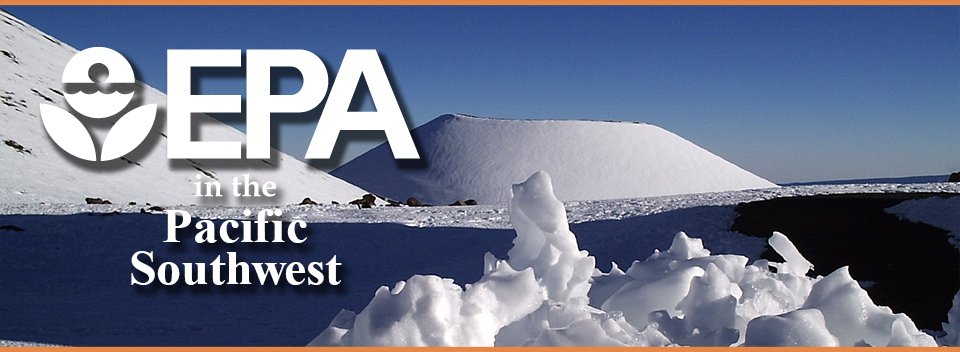November—December 2023 Newsletter

Progress on Maui
EPA has completed the Phase 1 removal of hazardous materials from fire-impacted areas on Maui. The work was conducted under a mission assignment from the Federal Emergency Management Agency (FEMA) for the Maui wildfire response. After the commencement of work in August, EPA, in coordination with the County of Maui, the Hawaii Department of Health, and local Maui cultural practitioners completed hazardous materials removal from residential and commercial properties; shipped containers containing hazardous materials off Maui for safe disposal; removed batteries from electric and hybrid vehicles, and residential and commercial power walls; applied soil stabilizer to properties to prevent toxic ash from blowing into the air or running into streams and the ocean; and more. To observe important cultural practices and protect Maui’s cherished historical legacy while undertaking this work, EPA developed and implemented a cultural monitoring program. The program included hiring local cultural monitors to oversee field work; mandatory cultural awareness training for EPA and U.S. Coast Guard personnel; and cultural advising to inform EPA’s community involvement program. Each day, a pule (a Hawaiian prayer) was held with field crews.
While EPA’s mission to remove household hazardous materials is finished, the agency’s work will continue on Maui. EPA has mission assignments from FEMA to support the County of Maui in addressing water infrastructure damaged by the fires and to provide advice on the overall recovery led by the State of Hawaii.
- Maui News: EPA completes removal of hazardous materials from burned properties
- EPA’s Response to the Maui Wildfires
Investing in Recycling, Tribes, and Infrastructure
EPA has recently announced investments in low-dust harvesters to protect farmers and communities from air pollution, recycling-related infrastructure and education for tribes, and water infrastructure to protect people from PFAS in drinking water. The funding for these critical investments comes from the Biden-Harris Investing in America agenda and the Water Infrastructure Financing and Innovation Act to support EPA’s progress in reducing emissions, building a clean energy economy, lowering energy costs for American households and businesses, creating good-paying union jobs, and advancing environmental justice across the country.
- AZPM News: Tucson Water Receives Federal Funding to Combat PFAS, Construct Water Treatment Facility
- Hoodline:EPA Awards $92 Million WIFIA Loan to Santa Clara Valley for Water Infrastructure Resilience
- Fox 5 San Diego: Rincon Tribe gets EPA Grant to Improve Recycling
- Investing in America
- Water Infrastructure Financing and Innovation
Involving the Public in Environmental Justice
In November, EPA announced the release of the draft policy, “Achieving Health and Environmental Protection Through EPA’s Meaningful Involvement Policy,” for a 60-day public comment period. The policy will guide the agency in providing meaningful public involvement in all its programs and regions. EPA is hosting three public informational webinars on its Meaningful Involvement Policy to provide an overview of the policy and to allow the public to ask questions. Register for one of the webinars to participate.
Enforcement Update
A Collaborative Environmental Justice Enforcement Plan
In 2021, EPA and CalEPA entered into a Memorandum of Understanding (MOU) on Collaborative Efforts on Enforcement and Compliance Assurance in Overburdened Communities. The MOU set a strategic direction and formalized a partnership to focus on three areas: strategic targeting of inspections, enforcement actions, and community engagement. After consultation with residents and advocates in overburdened communities across the state, the agencies developed an Environmental Justice Enforcement Action Plan to guide implementation of the MOU. EPA and Cal EPA recently met with key leaders from environmental and community groups across California to update pilot communities on progress and generate feedback on surrounding enforcement efforts within those communities. The feedback will help inform development of the 2024 Action Plan.
Climate Announcement at COP28
EPA has announced a rule that will sharply reduce methane and other harmful air pollutants from the oil and natural gas industry, including from hundreds of thousands of existing sources nationwide, promote the use of cutting-edge methane detection technologies, and deliver significant economic and public health benefits. This action was announced by Administrator Michael S. Regan and President Biden’s National Climate Advisor Ali Zaidi at COP28 in Dubai, United Arab Emirates.
News Release
Protecting Communities from Lead in Drinking Water
EPA recently announced a proposal to strengthen its Lead and Copper Rule. The proposal would require water systems across the country to replace lead service lines to protect children and vulnerable populations from the negative impacts of lead in drinking water, particularly those living in disadvantaged communities.
News Release
Environmental Education Awards
EPA is accepting applications for the President’s Environmental Youth Award (K-12 students) and the Presidential Innovation Award for Environmental Educators through January 15, 2024.
Learn More and Apply!
National Environmental Youth Advisory Committee
Emmanuel Alcantar is a climate and pro-housing advocate from South Los Angeles. He recently joined EPA’s new National Environmental Youth Advisory Committee.
Learn More!
Public Involvement
EPA in the Pacific Southwest encourages public engagement in addressing environmental issues through public meetings, events and other opportunities for public participation.
Public Notices, Meetings and Events


